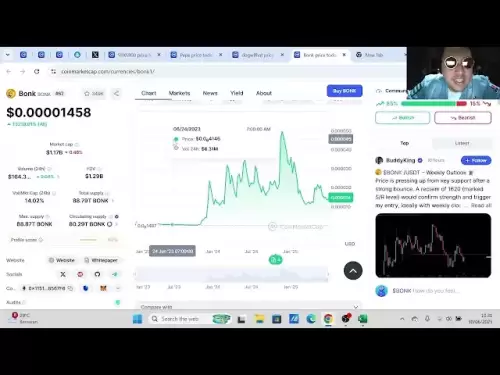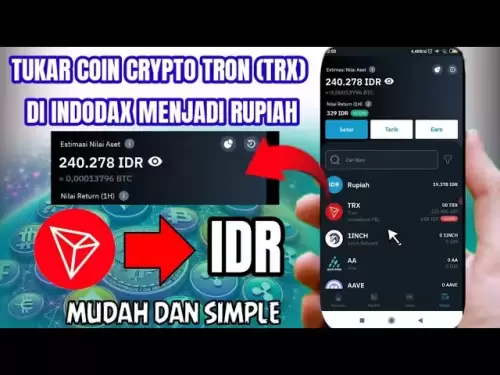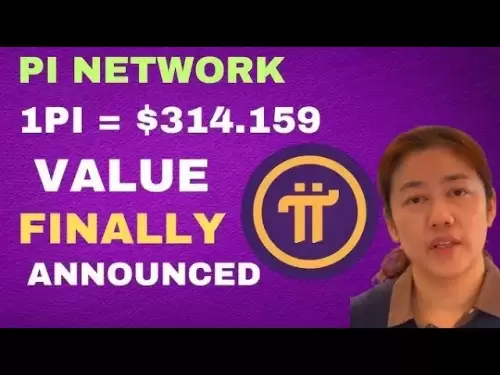-
 Bitcoin
Bitcoin $107,275.1551
-0.32% -
 Ethereum
Ethereum $2,485.3056
1.77% -
 Tether USDt
Tether USDt $1.0005
0.03% -
 XRP
XRP $2.2223
1.31% -
 BNB
BNB $657.7608
1.39% -
 Solana
Solana $156.3566
3.02% -
 USDC
USDC $0.9999
0.01% -
 TRON
TRON $0.2791
1.09% -
 Dogecoin
Dogecoin $0.1651
0.45% -
 Cardano
Cardano $0.5738
2.78% -
 Hyperliquid
Hyperliquid $40.2672
5.82% -
 Bitcoin Cash
Bitcoin Cash $517.5487
5.30% -
 Sui
Sui $2.7981
-0.40% -
 Chainlink
Chainlink $13.3500
-0.36% -
 UNUS SED LEO
UNUS SED LEO $9.1220
1.12% -
 Avalanche
Avalanche $17.9515
-0.32% -
 Stellar
Stellar $0.2361
-0.44% -
 Toncoin
Toncoin $2.9423
2.33% -
 Shiba Inu
Shiba Inu $0.0...01145
-0.68% -
 Litecoin
Litecoin $86.1693
-0.63% -
 Hedera
Hedera $0.1493
0.64% -
 Monero
Monero $315.1374
1.81% -
 Polkadot
Polkadot $3.4002
-0.73% -
 Dai
Dai $1.0001
0.03% -
 Bitget Token
Bitget Token $4.5413
-1.35% -
 Ethena USDe
Ethena USDe $1.0002
-0.01% -
 Uniswap
Uniswap $7.1733
-0.57% -
 Aave
Aave $274.0465
-0.23% -
 Pepe
Pepe $0.0...09810
2.24% -
 Pi
Pi $0.5101
-3.10%
How to check transaction fees on OKX?
To check transaction fees on OKX, log in, navigate to the trading or assets page, and review the fees for trading, depositing, or withdrawing cryptocurrencies.
Apr 04, 2025 at 12:00 pm
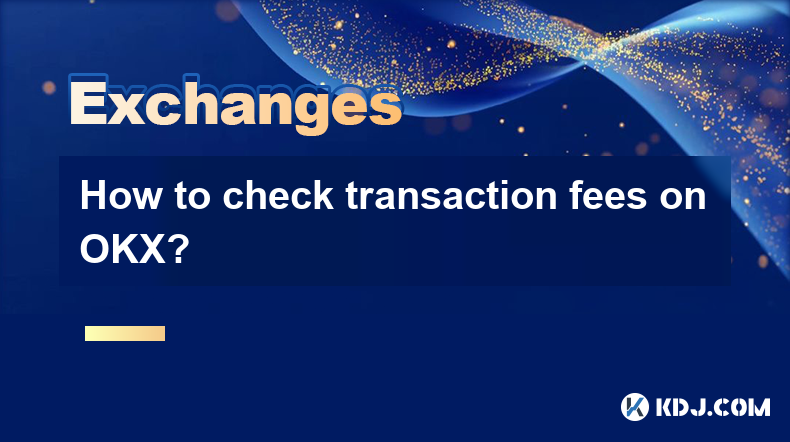
When using OKX, one of the leading cryptocurrency exchanges, understanding transaction fees is crucial for managing your trading costs effectively. OKX offers a transparent fee structure, but knowing how to check these fees can help you make more informed decisions. In this guide, we'll walk you through the steps to check transaction fees on OKX, whether you're trading, depositing, or withdrawing cryptocurrencies. We'll also cover how to interpret these fees and provide tips on minimizing them.
Understanding OKX Transaction Fees
Before diving into how to check transaction fees, it's important to understand what these fees entail. OKX charges fees for trading, depositing, and withdrawing cryptocurrencies. Trading fees are typically a percentage of the trade value, while deposit and withdrawal fees can vary depending on the cryptocurrency and the network used. OKX offers different fee structures for makers and takers, with maker fees generally being lower than taker fees. Understanding these distinctions can help you strategize your trading activities to minimize costs.
Checking Trading Fees on OKX
To check trading fees on OKX, follow these steps:
- Log into your OKX account and navigate to the trading page.
- Select the trading pair you are interested in. For example, if you're trading Bitcoin against USDT, select the BTC/USDT pair.
- Click on the "Fee" or "Fees" section on the trading interface. This is usually located near the order book or trading chart.
- Review the displayed fees. You'll see the maker and taker fees for the selected trading pair. Maker fees are charged when you add liquidity to the order book, while taker fees are charged when you remove liquidity by executing an existing order.
Checking Deposit Fees on OKX
Checking deposit fees on OKX is straightforward. Here's how you can do it:
- Navigate to the "Assets" or "Funds" section of your OKX account.
- Select "Deposit" and choose the cryptocurrency you want to deposit.
- Look for the "Deposit Fee" information. This is usually displayed next to the deposit address or QR code. Some cryptocurrencies may have no deposit fees, while others might have a small fee.
Checking Withdrawal Fees on OKX
Withdrawal fees on OKX can vary significantly depending on the cryptocurrency and the network used. To check these fees:
- Go to the "Assets" or "Funds" section of your OKX account.
- Select "Withdraw" and choose the cryptocurrency you want to withdraw.
- Enter the withdrawal amount and select the network if applicable. OKX supports multiple networks for some cryptocurrencies, and fees can differ between them.
- Review the "Withdrawal Fee" displayed. This fee will be deducted from the total amount you're withdrawing.
Interpreting OKX Transaction Fees
Understanding the fees displayed on OKX is crucial for effective trading. Here's how to interpret them:
- Maker and Taker Fees: Maker fees are charged when you place an order that adds liquidity to the order book, while taker fees are charged when you take an existing order from the book. Generally, maker fees are lower than taker fees.
- Deposit Fees: These are fees charged when you deposit cryptocurrencies into your OKX account. Some cryptocurrencies may have no deposit fees, while others might have a small fee.
- Withdrawal Fees: These are fees charged when you withdraw cryptocurrencies from your OKX account. The fee can vary based on the cryptocurrency and the network used for the withdrawal.
Tips for Minimizing Transaction Fees on OKX
Minimizing transaction fees can help you maximize your returns. Here are some tips to consider:
- Use Maker Orders: Since maker fees are typically lower than taker fees, try to use limit orders that add liquidity to the order book.
- Trade High-Volume Pairs: OKX often offers lower fees for high-volume trading pairs. Trading popular pairs like BTC/USDT can help you benefit from lower fees.
- Utilize OKB: OKX's native token, OKB, can be used to pay for trading fees at a discount. Holding OKB in your account can reduce your trading fees.
- Choose the Right Network: When withdrawing cryptocurrencies, select the network with the lowest fee. For example, withdrawing Bitcoin via the Bitcoin network might be more expensive than using the Lightning Network.
Monitoring Fee Changes on OKX
OKX may update its fee structure from time to time. To stay informed about any changes:
- Check the OKX Blog and Announcements: OKX regularly posts updates on its blog and through announcements within the platform.
- Review Your Transaction History: Regularly check your transaction history to ensure you're aware of any changes in fees.
- Use the OKX Fee Calculator: OKX provides a fee calculator tool that can help you estimate fees for different types of transactions.
Common Questions About OKX Transaction Fees
What are the typical trading fees on OKX?
Trading fees on OKX vary depending on the trading pair and whether you're a maker or a taker. For most trading pairs, maker fees range from 0.08% to 0.1%, while taker fees range from 0.1% to 0.15%. These fees can be reduced by using OKB to pay for them.
Are there any deposit fees on OKX?
Deposit fees on OKX vary by cryptocurrency. Some cryptocurrencies have no deposit fees, while others may have a small fee. You can check the specific deposit fee for each cryptocurrency in the "Deposit" section of your OKX account.
How can I reduce withdrawal fees on OKX?
To reduce withdrawal fees on OKX, choose the network with the lowest fee when withdrawing cryptocurrencies. For example, using the Lightning Network for Bitcoin withdrawals can be cheaper than using the Bitcoin network. Additionally, holding OKB in your account can help reduce overall transaction fees.
Can I use OKB to pay for transaction fees on OKX?
Yes, you can use OKB to pay for transaction fees on OKX. Using OKB can reduce your trading fees by up to 40%, depending on your OKB holdings.
How often does OKX update its fee structure?
OKX may update its fee structure periodically. It's important to check the OKX blog and announcements regularly to stay informed about any changes. You can also review your transaction history to ensure you're aware of any fee adjustments.
What is the difference between maker and taker fees on OKX?
Maker fees on OKX are charged when you place an order that adds liquidity to the order book, while taker fees are charged when you take an existing order from the book. Maker fees are generally lower than taker fees, encouraging users to add liquidity to the market.
How can I check the current fee structure on OKX?
To check the current fee structure on OKX, log into your account and navigate to the trading page. Select a trading pair and click on the "Fee" or "Fees" section to view the maker and taker fees. For deposit and withdrawal fees, go to the "Assets" or "Funds" section and select "Deposit" or "Withdraw" to see the specific fees for each cryptocurrency.
Is there a fee calculator on OKX?
Yes, OKX provides a fee calculator tool that can help you estimate fees for different types of transactions. You can find this tool on the OKX website or within the platform.
Can I get a discount on OKX fees?
Yes, you can get a discount on OKX fees by using OKB to pay for them. Holding OKB in your account can reduce your trading fees by up to 40%, depending on your OKB holdings.
How do I know if OKX has changed its fee structure?
To stay informed about any changes in OKX's fee structure, regularly check the OKX blog and announcements. You can also review your transaction history to ensure you're aware of any fee adjustments.
Disclaimer:info@kdj.com
The information provided is not trading advice. kdj.com does not assume any responsibility for any investments made based on the information provided in this article. Cryptocurrencies are highly volatile and it is highly recommended that you invest with caution after thorough research!
If you believe that the content used on this website infringes your copyright, please contact us immediately (info@kdj.com) and we will delete it promptly.
- Coinbase, Altcoins, and Listings: What's the Buzz?
- 2025-07-01 00:30:11
- Chainlink's Bullish Signals: Investors Bet on Long-Term Value
- 2025-07-01 00:50:12
- CICADA Finance Soars on BNB Chain: A TGE Deep Dive
- 2025-07-01 01:30:11
- MicroStrategy's Bitcoin Bet: Holdings, Sell-Off Concerns, and S&P 500 Dreams
- 2025-07-01 01:30:11
- XRPL EVM Sidechain: Ethereum dApps Unleashed on XRP Ledger!
- 2025-07-01 01:35:11
- Bybit, Kraken, and Tokenized Stocks: A New Era for Trading?
- 2025-07-01 00:30:11
Related knowledge
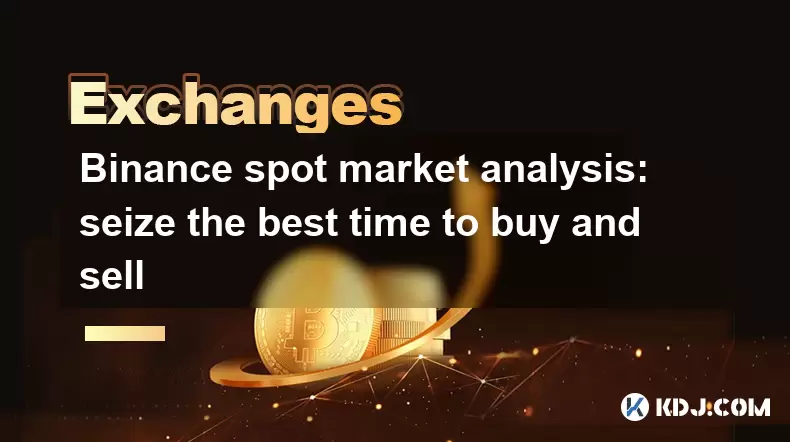
Binance spot market analysis: seize the best time to buy and sell
Jun 19,2025 at 04:56pm
Understanding the Binance Spot MarketThe Binance spot market is one of the most popular platforms for cryptocurrency trading globally. It allows users to trade digital assets at current market prices, making it essential for traders aiming to buy low and sell high. Unlike futures or margin trading, spot trading involves direct ownership of the asset aft...
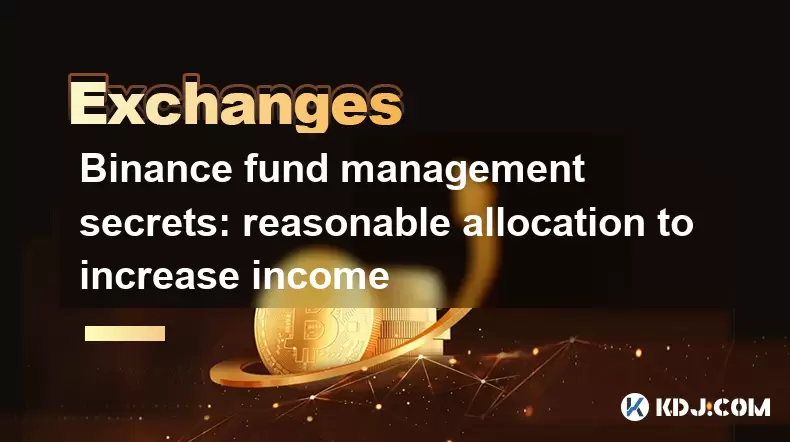
Binance fund management secrets: reasonable allocation to increase income
Jun 22,2025 at 02:29pm
Understanding Binance Fund ManagementBinance fund management involves strategic allocation of your cryptocurrency assets to optimize returns while managing risk. The key to successful fund management lies in understanding how different investment options on the Binance platform can be utilized to create a diversified portfolio. This includes spot tradin...
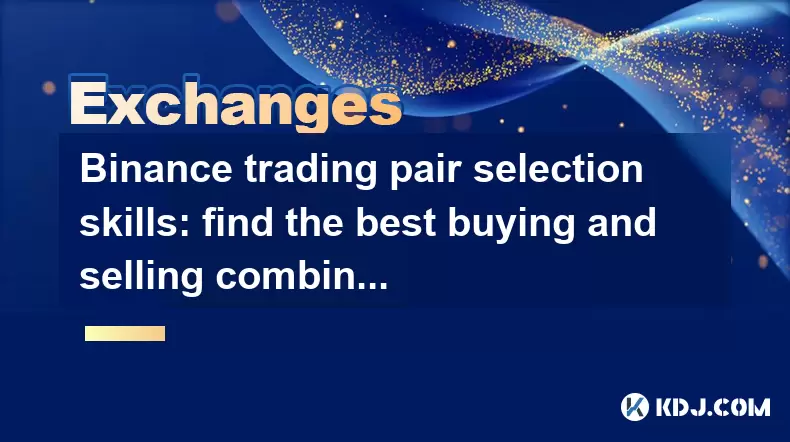
Binance trading pair selection skills: find the best buying and selling combination
Jun 23,2025 at 02:49am
Understanding the Basics of Trading Pairs on BinanceBefore diving into trading pair selection skills, it's essential to understand what a trading pair is. On Binance, a trading pair refers to two cryptocurrencies that can be traded against each other. For example, BTC/USDT means Bitcoin is being traded against Tether. Each trading pair has its own liqui...
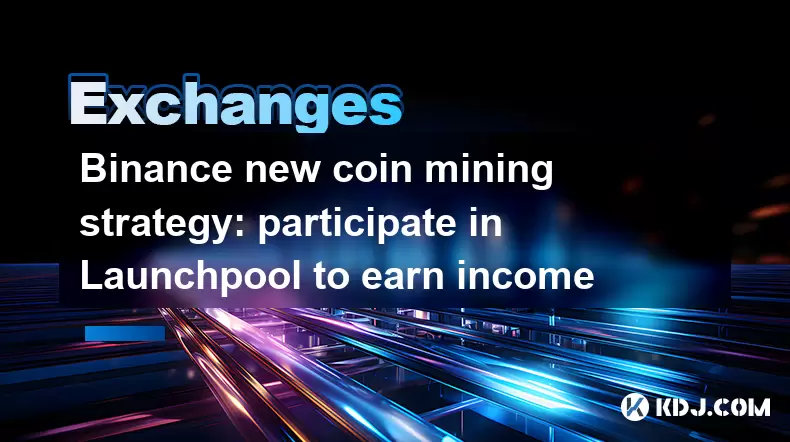
Binance new coin mining strategy: participate in Launchpool to earn income
Jun 23,2025 at 11:56am
What is Binance Launchpool and how does it work?Binance Launchpool is a feature introduced by the world’s largest cryptocurrency exchange, Binance, to allow users to earn new tokens through staking. This platform enables users to stake their existing cryptocurrencies (such as BNB, BUSD, or other supported assets) in exchange for newly launched tokens. T...
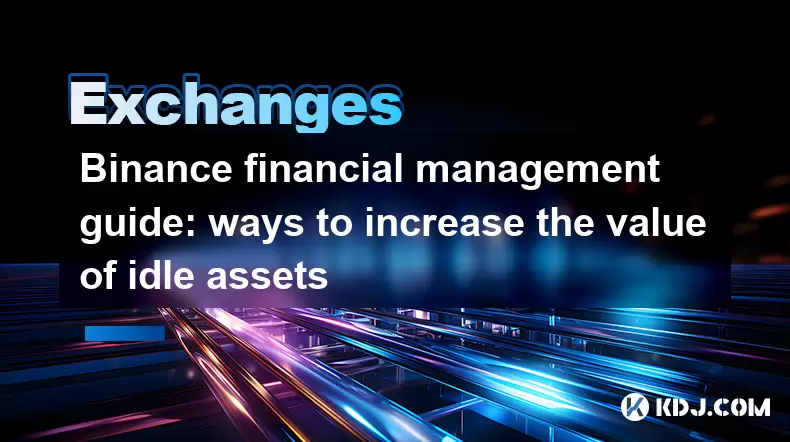
Binance financial management guide: ways to increase the value of idle assets
Jun 19,2025 at 11:22pm
Understanding Idle Assets in the Cryptocurrency SpaceIn the fast-paced world of cryptocurrency, idle assets refer to digital currencies that are not actively being used for trading, staking, or yield farming. Holding these funds in a wallet without utilizing them means missing out on potential growth opportunities. Binance, as one of the leading platfor...
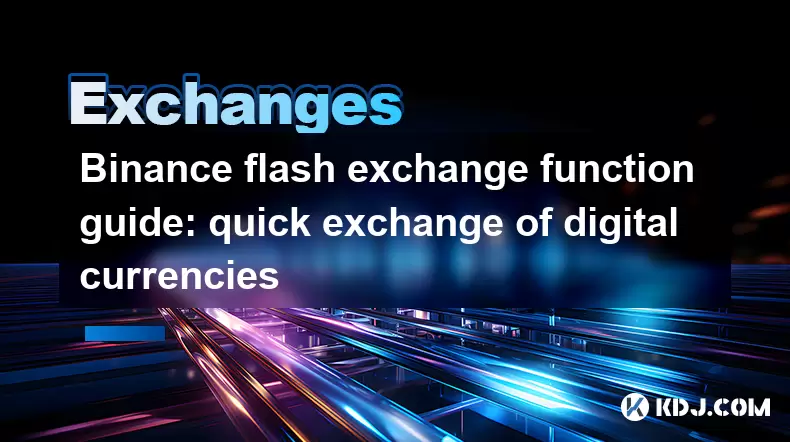
Binance flash exchange function guide: quick exchange of digital currencies
Jun 23,2025 at 12:29pm
What is the Binance Flash Exchange Function?The Binance Flash Exchange function is a powerful tool designed to allow users to instantly swap between supported cryptocurrencies without the need for placing traditional buy/sell orders. This feature simplifies the trading process by offering a direct exchange mechanism, eliminating the requirement to conve...

Binance spot market analysis: seize the best time to buy and sell
Jun 19,2025 at 04:56pm
Understanding the Binance Spot MarketThe Binance spot market is one of the most popular platforms for cryptocurrency trading globally. It allows users to trade digital assets at current market prices, making it essential for traders aiming to buy low and sell high. Unlike futures or margin trading, spot trading involves direct ownership of the asset aft...

Binance fund management secrets: reasonable allocation to increase income
Jun 22,2025 at 02:29pm
Understanding Binance Fund ManagementBinance fund management involves strategic allocation of your cryptocurrency assets to optimize returns while managing risk. The key to successful fund management lies in understanding how different investment options on the Binance platform can be utilized to create a diversified portfolio. This includes spot tradin...

Binance trading pair selection skills: find the best buying and selling combination
Jun 23,2025 at 02:49am
Understanding the Basics of Trading Pairs on BinanceBefore diving into trading pair selection skills, it's essential to understand what a trading pair is. On Binance, a trading pair refers to two cryptocurrencies that can be traded against each other. For example, BTC/USDT means Bitcoin is being traded against Tether. Each trading pair has its own liqui...

Binance new coin mining strategy: participate in Launchpool to earn income
Jun 23,2025 at 11:56am
What is Binance Launchpool and how does it work?Binance Launchpool is a feature introduced by the world’s largest cryptocurrency exchange, Binance, to allow users to earn new tokens through staking. This platform enables users to stake their existing cryptocurrencies (such as BNB, BUSD, or other supported assets) in exchange for newly launched tokens. T...

Binance financial management guide: ways to increase the value of idle assets
Jun 19,2025 at 11:22pm
Understanding Idle Assets in the Cryptocurrency SpaceIn the fast-paced world of cryptocurrency, idle assets refer to digital currencies that are not actively being used for trading, staking, or yield farming. Holding these funds in a wallet without utilizing them means missing out on potential growth opportunities. Binance, as one of the leading platfor...

Binance flash exchange function guide: quick exchange of digital currencies
Jun 23,2025 at 12:29pm
What is the Binance Flash Exchange Function?The Binance Flash Exchange function is a powerful tool designed to allow users to instantly swap between supported cryptocurrencies without the need for placing traditional buy/sell orders. This feature simplifies the trading process by offering a direct exchange mechanism, eliminating the requirement to conve...
See all articles























